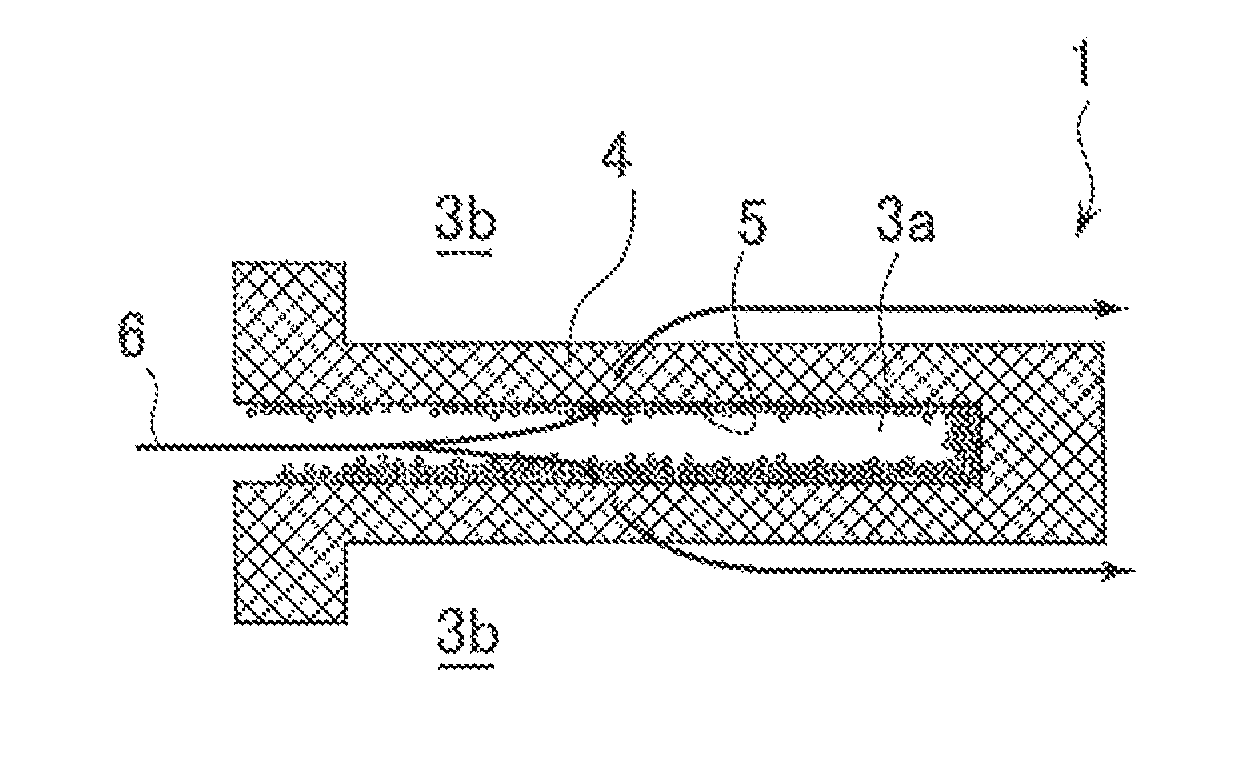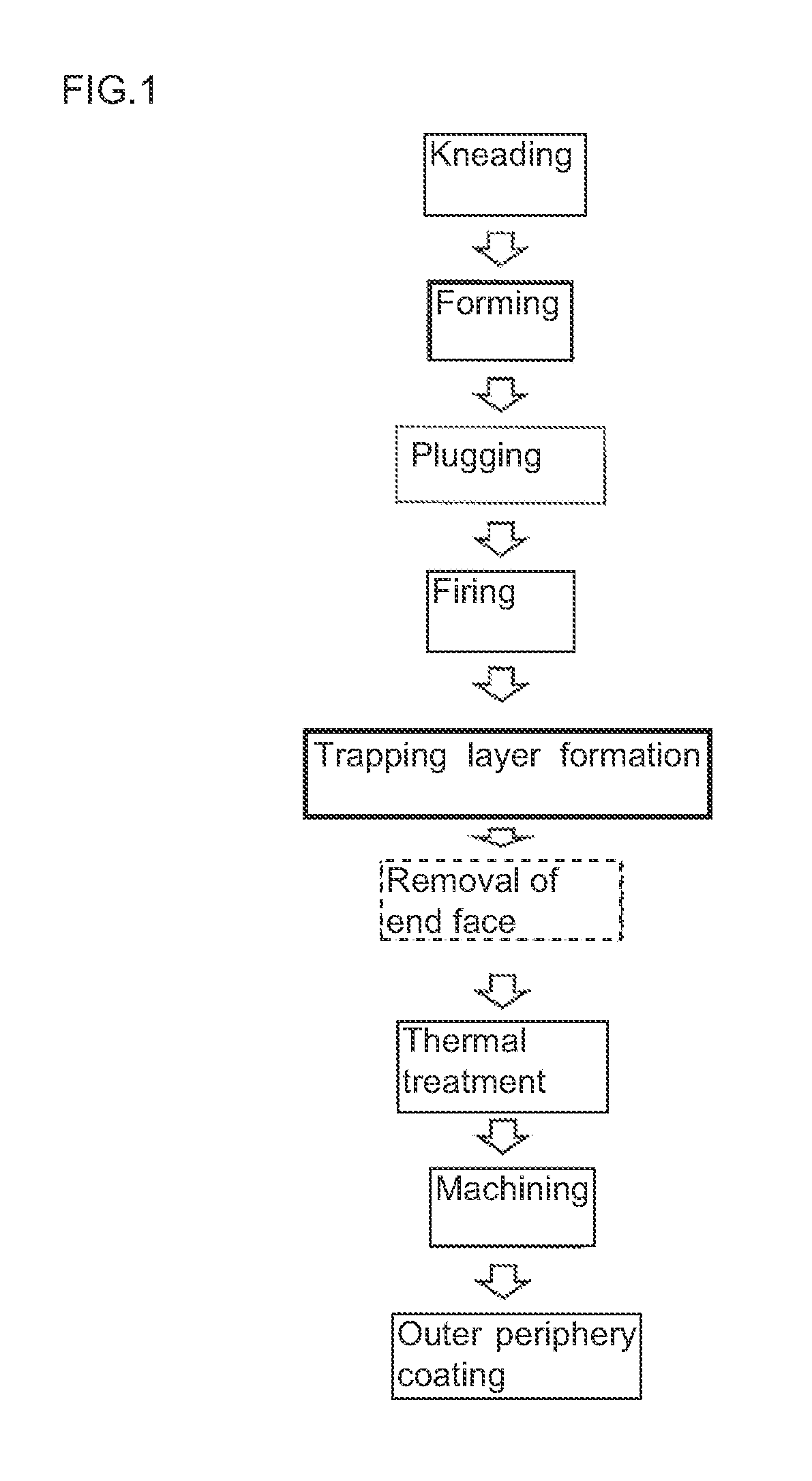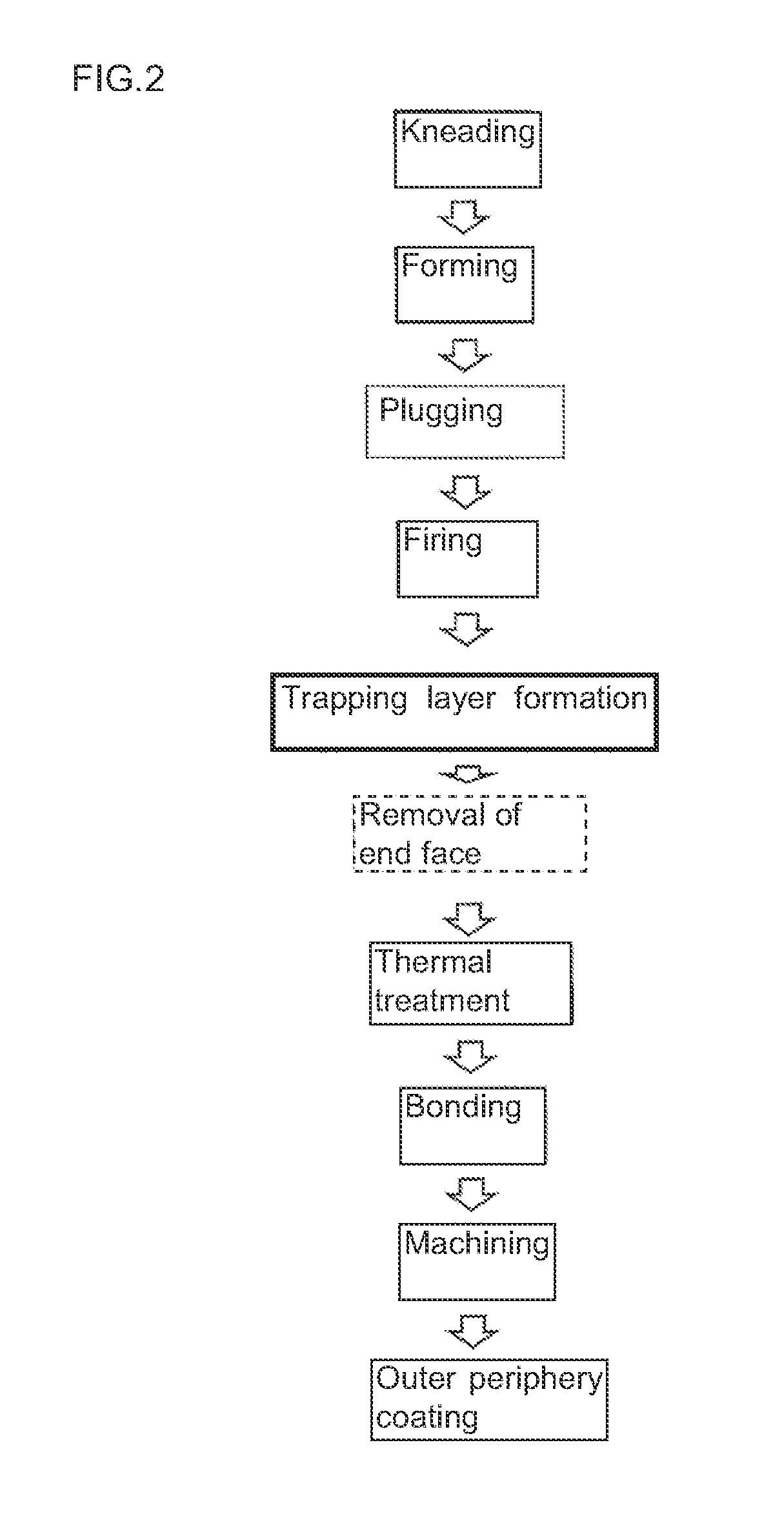Method for manufacturing plugged honeycomb structure
a technology of honeycomb and manufacturing method, which is applied in the direction of catalyst carriers, ceramicware, physical/chemical process catalysts, etc., can solve the problems of long time spent for forming membranes of desired amount, high yield of raw materials, and low waste of raw materials
- Summary
- Abstract
- Description
- Claims
- Application Information
AI Technical Summary
Benefits of technology
Problems solved by technology
Method used
Image
Examples
examples 1 to 9
[0105]There were mixed and kneaded 80 parts of silicon carbide, 20 parts of metal silicon, 13 parts of coke having an average particle diameter of 10 μm as a pore former, 35 parts of water as a dispersion medium, 6 parts of hydroxypropylmethyl cellulose as an organic binder, and 0.5 part by mass of ethylene glycol as a dispersant to prepare kneaded clay. Next, the kneaded clay was subjected to extrusion forming using a die having a quadrangular cell shape and a predetermined slit width to obtain a honeycomb-shaped substrate having an entire shape of prismatic column (cylinder). After the honeycomb-shaped substrate was dried with a microwave drier and further completely dried with a hot air drier, a mask was alternately applied to cell opening portions on an end face of the honeycomb-shaped substrate, and the end portion having the mask was immersed in plugging slurry containing the aforementioned silicon carbide to form plugging portions disposed alternately in a checkerwise pattern...
examples 10 to 12
[0128]There were mixed and kneaded 100 parts of cordierite forming raw material obtained by mixing alumina, aluminum hydroxide, kaolin, talc, and silica, 13 parts of coke having an average particle diameter of 10 μm as a pore former, 35 parts of water as a dispersion medium, 6 parts of hydroxypropylmethyl cellulose as an organic binder, and 0.5 part of ethylene glycol as a dispersant to prepare kneaded clay. Next, the kneaded clay was subjected to extrusion forming using a die having a predetermined slit width for alternately forming octagonal cells and quadrangular cells to obtain a honeycomb-shaped substrate having an entire shape of circular column (cylinder) having octagonal cells and quadrangular cells. After the honeycomb-shaped substrate was dried with a microwave drier and further completely dried with a hot air drier, a mask was alternately applied to cell opening portions on an end face of the honeycomb-shaped substrate, and the end portion having the mask was immersed in ...
example 13
[0130]Silicon carbide was used as the framework particles to manufacture a quadrangular columnar plugged honeycomb structure, and membranes were formed on the plugged honeycomb structure on the basis of the second membrane forming method described above. Then, the plugged honeycomb structure (having trapping layers by membrane formation), before bonding, was subjected to a thermal treatment without performing end face removal, and the structure was evaluated as a plugged honeycomb structure with surface trapping layers. The other conditions were the same as in Example 3. The results are shown in Table 1.
[0131](Discussion)
[0132]From Examples 1 to 5 and 10 to 12, it is understood that, when the aerosol density is below 1.0 g / m3, the raw material yield falls to a large extent and, when the aerosol density is above 1600 g / m3, the pressure loss reduction rate with PM becomes small.
[0133]In addition, from Examples 1 to 4 and 6 to 11, it is understood that, in the case that the aerosol den...
PUM
| Property | Measurement | Unit |
|---|---|---|
| pore size | aaaaa | aaaaa |
| porosity | aaaaa | aaaaa |
| pore size | aaaaa | aaaaa |
Abstract
Description
Claims
Application Information
 Login to View More
Login to View More - R&D
- Intellectual Property
- Life Sciences
- Materials
- Tech Scout
- Unparalleled Data Quality
- Higher Quality Content
- 60% Fewer Hallucinations
Browse by: Latest US Patents, China's latest patents, Technical Efficacy Thesaurus, Application Domain, Technology Topic, Popular Technical Reports.
© 2025 PatSnap. All rights reserved.Legal|Privacy policy|Modern Slavery Act Transparency Statement|Sitemap|About US| Contact US: help@patsnap.com



